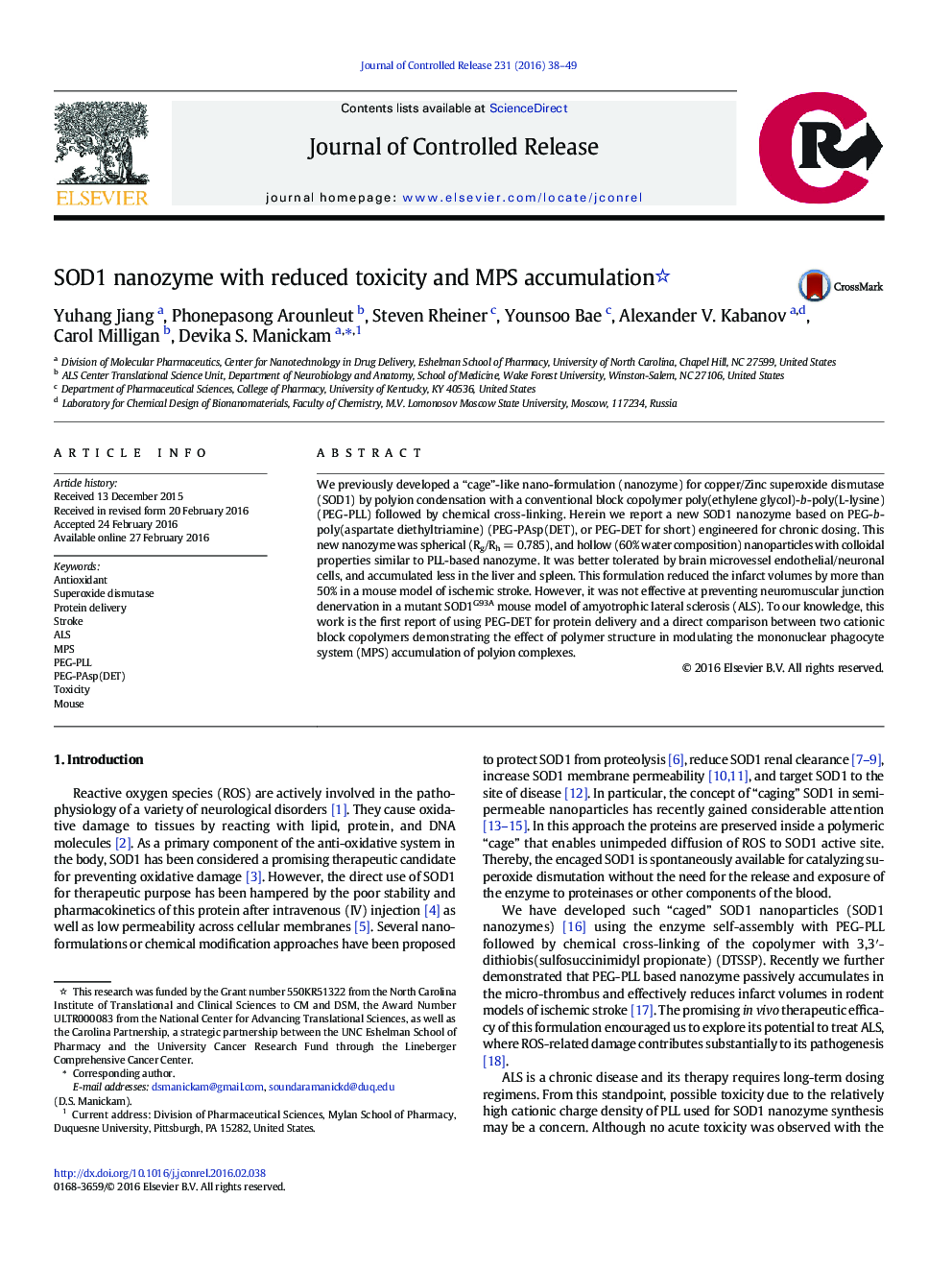| Article ID | Journal | Published Year | Pages | File Type |
|---|---|---|---|---|
| 1423525 | Journal of Controlled Release | 2016 | 12 Pages |
We previously developed a “cage”-like nano-formulation (nanozyme) for copper/Zinc superoxide dismutase (SOD1) by polyion condensation with a conventional block copolymer poly(ethylene glycol)-b-poly(L-lysine) (PEG-PLL) followed by chemical cross-linking. Herein we report a new SOD1 nanozyme based on PEG-b-poly(aspartate diethyltriamine) (PEG-PAsp(DET), or PEG-DET for short) engineered for chronic dosing. This new nanozyme was spherical (Rg/Rh = 0.785), and hollow (60% water composition) nanoparticles with colloidal properties similar to PLL-based nanozyme. It was better tolerated by brain microvessel endothelial/neuronal cells, and accumulated less in the liver and spleen. This formulation reduced the infarct volumes by more than 50% in a mouse model of ischemic stroke. However, it was not effective at preventing neuromuscular junction denervation in a mutant SOD1G93A mouse model of amyotrophic lateral sclerosis (ALS). To our knowledge, this work is the first report of using PEG-DET for protein delivery and a direct comparison between two cationic block copolymers demonstrating the effect of polymer structure in modulating the mononuclear phagocyte system (MPS) accumulation of polyion complexes.
Graphical abstractFigure optionsDownload full-size imageDownload high-quality image (223 K)Download as PowerPoint slide
